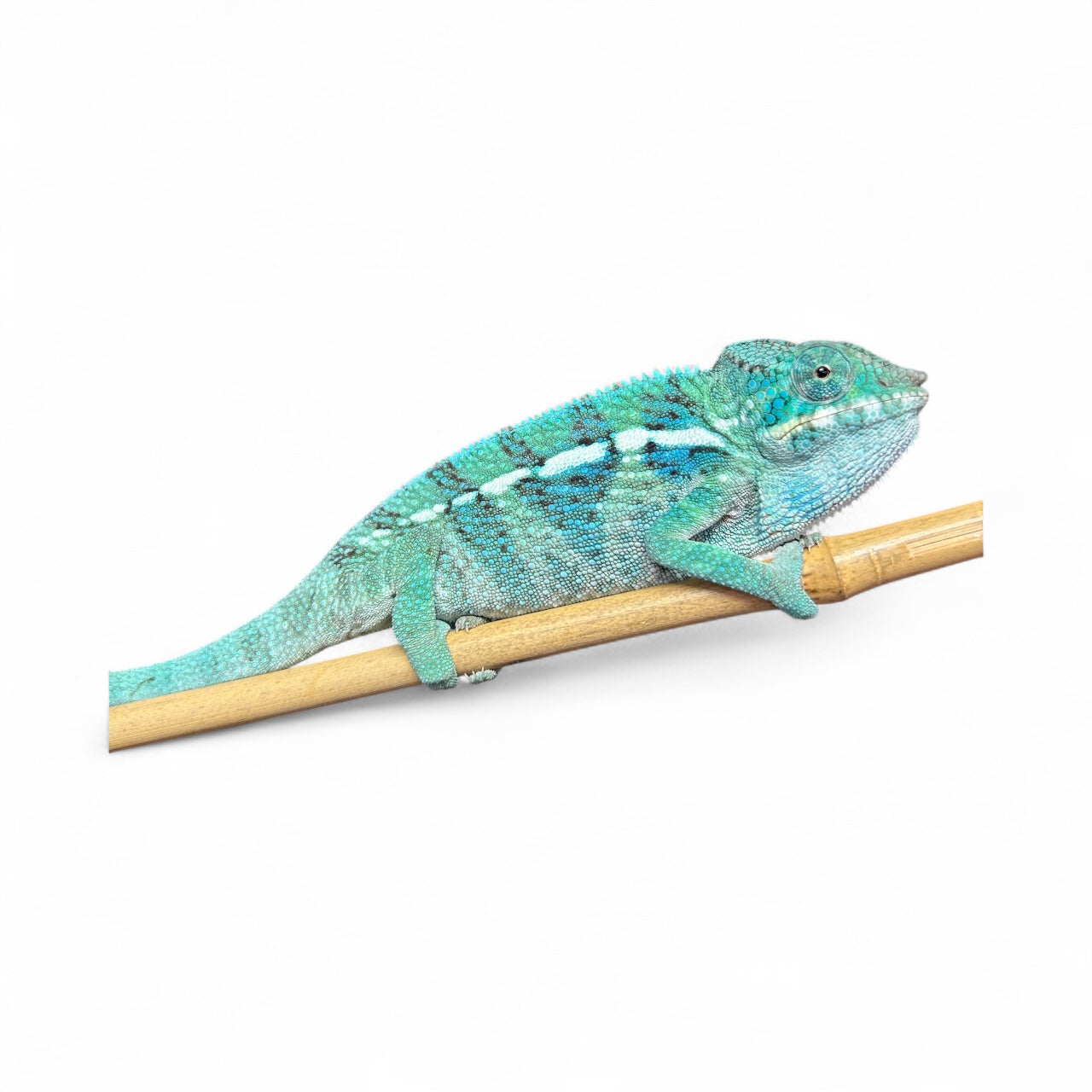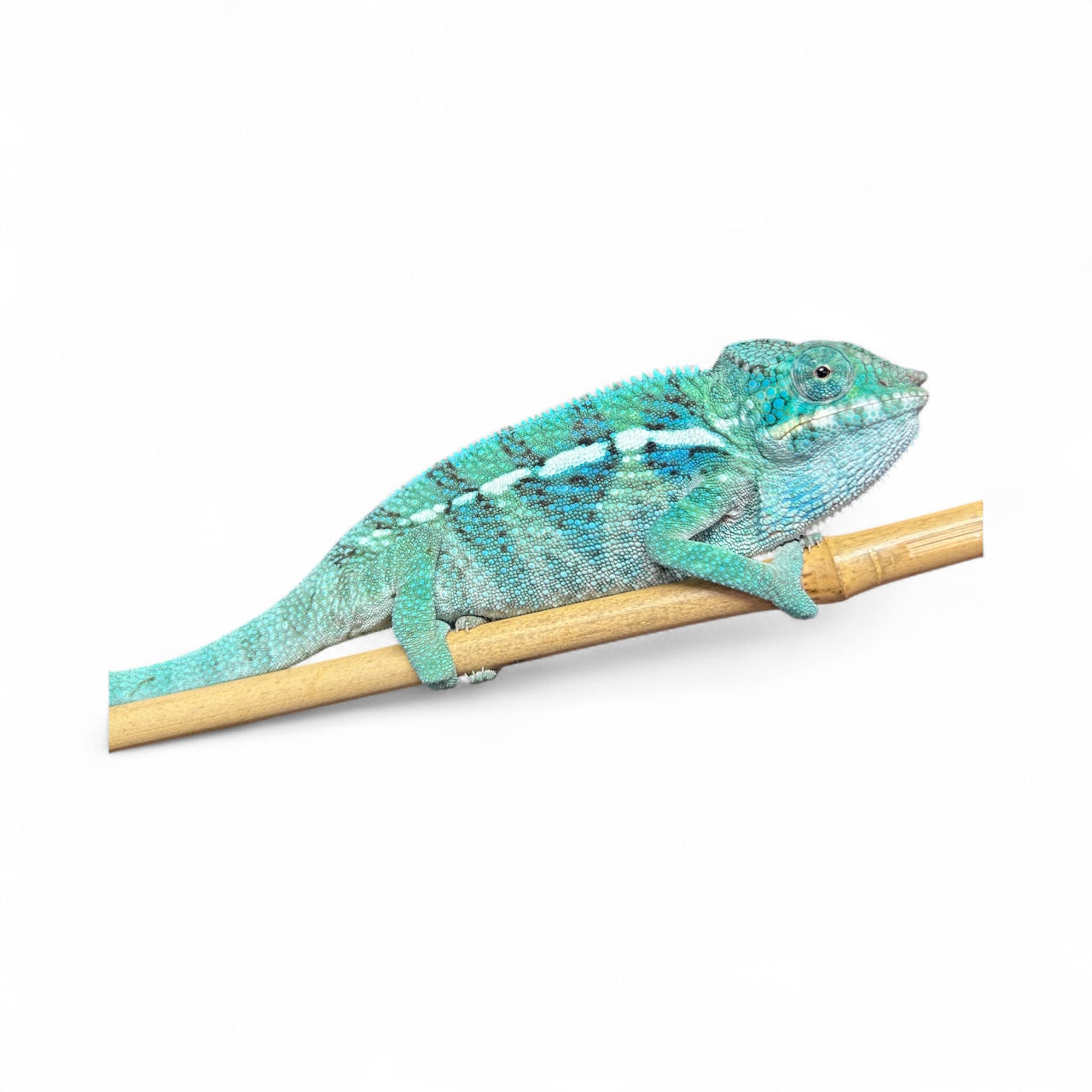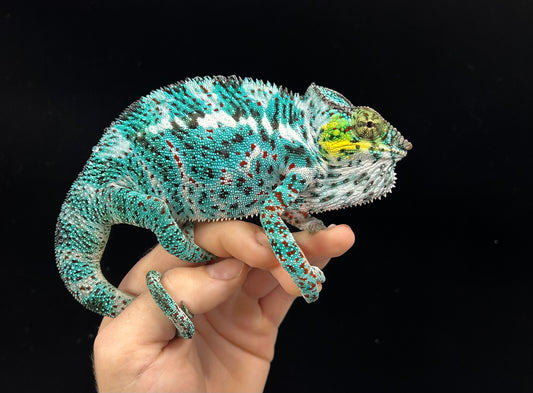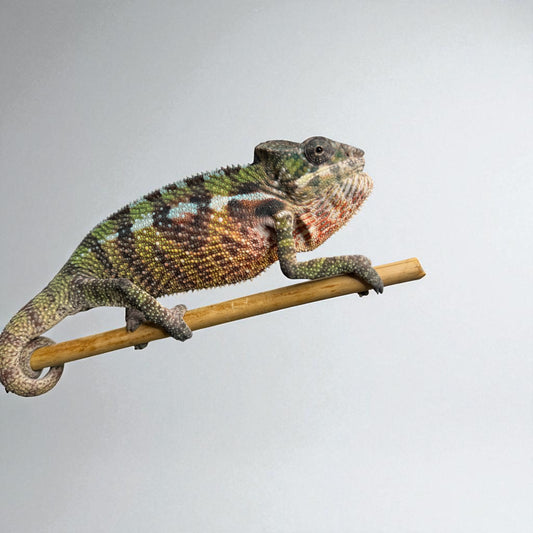Reptile care is very important to us here at Jurassic Exotics. Please check out our brief care sheets to learn more about the needs for your reptile. Thank you!
Panther Chameleon Care Sheet
Panther Chameleons:
The panther chameleon (Furcifer pardalis) is a species of chameleon which originates from and is commonly found in the eastern and northern parts of Madagascar.
Size and Life Span:
Male panther chameleons can grow anywhere from 18 to 21 inches. Females grow to be about 12 to 14 inches long. Males can live anywhere from 5-7+ years. Females typically live 3-5 years.
Housing:
Adult male panther chameleons should be kept in a minimum of 24x24x48 inches cage. Adult female panther chameleons should be kept in a minimum of 18x18x36 inches cage. Provide multiple branches or twigs for climbing, potted plants (Ficus benjamina, Umbrella tree, or hibiscus). Males are moderately territorial and should not be housed together.
Substrate:
Chameleon cages are best left with a bare bottom. Substrate will only complicate the cleaning of your chameleon's cage and give insects a place to hide. If you choose to have substrate, keep it simple with paper towels or newspaper.
Temperature:
Ambient temperature for your chameleon should range between 75-85 degrees Fahrenheit. Maintain 60-80 % relative humidity and air movement (no stagnant humidity). Offer water either by misting the plants every 4-8 hours (Once in the morning, Mid-day If needed, and once before shutting off the lights) A mister or water dripper system can be very beneficial for the hydration of your chameleon.
Lighting:
(Lighting is very important) T5 Arcadia 6% or T5 HO 5.0 UVB ZooMed Reptisun.
Food and water:
Feed a variety of gut-loaded insects such as crickets, dubia roaches, superworms, grasshoppers, and silkworms. Calcium powder (without D3) should be included with every feeding, Multivitamin with Calcium D3 should be provided twice a month. With optional use of Bee Pollen.
Bonding:
Chameleons are most comfortable when left alone. But some do enjoy coming out of their enclosure and exploring. When holding your chameleon allow it to walk onto you, place your hand under its chin and allow it to climb across your hand. Hand feeding is also a great way to create a bonding connection between you and your chameleon.
Featured collection
-
EU Imported Captive Bred Nosy Faly Breeding Pair
Regular price $795.00 USDRegular priceUnit price per -
EU Imported Captive Bred Sambava Breeding Pair.
Regular price $699.00 USDRegular priceUnit price per -
European Imported Antalaha Captive Bred Breeding Pair.
Regular price $699.00 USDRegular priceUnit price per -
Captive Bred Eu Imported Nosy Faly Male
Regular price $589.00 USDRegular priceUnit price per

Jurassic Exotics
Pure Blue Ambanja Male





